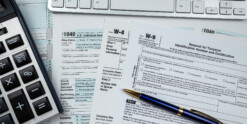If you’re on your own- single, divorced, widowed and you are trying to determine how your finances are going to provide for you, there are a few big things to know about retirement planning so that you can live the kind of life you want. There are a few questions you want to have the answers to and a few boxes that you want to have checked. Let’s start with the basics.
What are your expenses now and what do you expect your expenses to be in retirement?
Think about how much money you spend on a monthly and annual basis. Look at your expenses in two buckets- non-discretionary and discretionary. Your non-discretionary expenses are those like your mortgage, electric bill, cable bills- set expenses that will recur every month. Your discretionary expenses are those expenses such as groceries, going out to dinner, gym memberships, retail therapy (my favorite!), and trips. It’s important to have an understanding of what those expenses look like in totality.
How Much Are You Saving?
Identify how much you are saving on a yearly basis. Are you maxing out your 401(k)? For 2022, up to the age of 50 you can contribute $20,500/year. If you are 50 or older, you can make what is called a catch-up contribution and contribute $25,500. If possible, try to max out your 401(k) every year. Also, it’s good to know if your company/employer has a matching program and how much they will additionally contribute each year. We like to call this “free money.”
If you have maxed out your 401(k) for the year and have additional funds left after all of your expenses are paid, consider putting these funds into a brokerage account. You can open a brokerage account at any large custodian such as Schwab or Fidelity.
After you have determined your saving and spending, it’s time to look at how you are going to reach your financial retirement goals that will allow you to live the life you want to live!
What Are Your Sources of Income in Retirement?
For many people, the main sources of income in retirement will likely come from Social Security, pension income and investment income. There are, however, some people out there who are lucky enough to receive additional income from rental or investment properties. It’s important to understand and know what your Social Security benefits look like, and you can log onto www.ssa.gov and find the particulars. You’ll notice that your benefits going up materially each year, so depending on your situation you may want to consider waiting until Full Retirement Age (FRA). But do know that you will have benefits that are available to you beginning at age 62.
Calculate How Much You Will Need in Retirement
Once you know what you will spend in retirement and the sources of your income in retirement, it’s time to do some real planning. We call the difference in the income coming in versus what you spend the “gap” and we need to figure out how to fill the gap using income from your investments. How do you calculate this?
Let’s look at a real-life example:
Let’s say your expenses per month are $5,000.
You plan to work until Full Retirement Age and then take your Social Security benefits which are $2,000 per month.
You have a $3,000 gap per month that you will need to fill through taking funds from your investment accounts. This gap should ideally be filled by your retirement nest egg. To calculate how much you would need in the nest egg we like to use the 1,000-Bucks-a-Month-Rule (it’s actually more of a rule of thumb than rule). The 1,000-Bucks-a-Month-Rule states that someone who retires at the typical age of 62-65 need $240,000 in savings for every $1,000 they need to fill their income gap (this assumes a 5% annual withdrawal rate).
In this case a retiree would need $720,000 in savings to meet their monthly needs.
$3,000 x $240,000 = $720,000
If this makes sense, let’s move forward to talk about how that income from your investment accounts can be generated.
Investing for Income in Retirement
A lot of people don’t know the secret behind investing for income in retirement. There’s actually a way to take from your portfolio that is not just a straight draw down. When you invest for income in retirement you’re investing in stocks and bonds that pay you dividends and interest. Using a mixture of blue- chip dividend paying stocks that have potential for growth over time along with fixed income (think bonds) you can create a stream of income that can be distributed to you in order to assist with your monthly cash flow. These investments should also provide growth in your portfolio over time (this can vary year to year). Therefore, your retirement funds may be able to last much longer than you actually thought possible.
Putting Together a Plan
If you are concerned or have questions about what your retirement might look like, you may consider speaking to a financial advisor early on so that there is a solid plan put in place that will help you work towards your goals. A financial advisor can do a deep dive into the different aspects of your financial planning and put together a comprehensive plan and goal analysis that can be used as a roadmap to ensure that you get to where you want to be.
This information is provided to you as a resource for informational purposes only and should not be viewed as investment advice or recommendations. Investing involves risk, including the possible loss of principal. There is no guarantee offered that investment return, yield, or performance will be achieved. There will be periods of performance fluctuations, including periods of negative returns. Past performance is not indicative of future results when considering any investment vehicle. This information is being presented without consideration of the investment objectives, risk tolerance, or financial circumstances of any specific investor and might not be suitable for all investors. This information is not intended to, and should not, form a primary basis for any investment decision that you may make. Always consult your own legal, tax, or investment advisor before making any investment/tax/estate/financial planning considerations or decisions.













